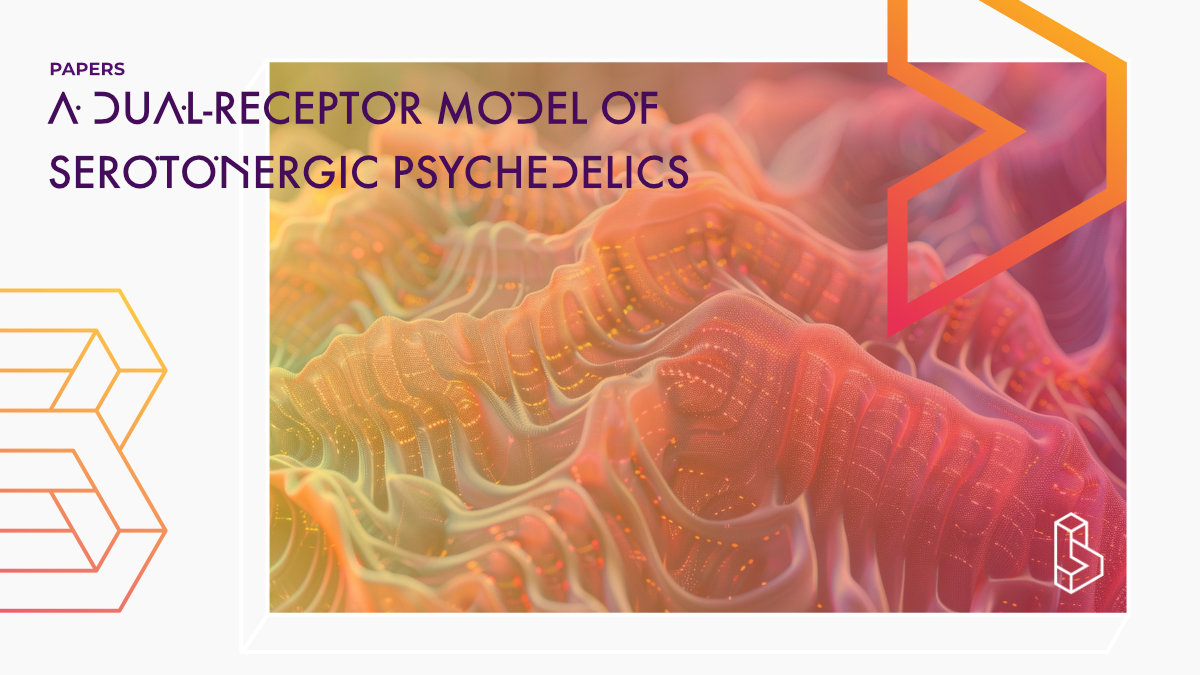This pre-print, based on predictive processing and an energy-based model of cortical dynamics, explores the therapeutic mechanism of serotonergic psychedelics. It suggests that a combination of 5-HT2a and 5-HT1a agonism leads to a more psychologically tolerable acute experience and better therapeutic efficacy compared to pure agonists. This finding supports the clinical success of mixed serotonin agonists like LSD, psilocybin, and DMT. It suggests potential for the development of even more effective and tolerable psychotherapeutic agents, such as biased 5-HT1a agonist psychedelics like 5-MeO-DMT.
Abstract of A dual-receptor model of serotonergic psychedelics: therapeutic insights from simulated cortical dynamics
“Serotonergic psychedelics have been identified as promising next-generation therapeutic agents in the treatment of mood and anxiety disorders. While their efficacy has been increasingly validated, the mechanism by which they exert a therapeutic effect is still debated. A popular theoretical account is that excessive 5-HT2a agonism disrupts cortical dynamics, relaxing the precision of maladaptive high-level beliefs, thus making them more malleable and open to revision. We extend this perspective by developing a theoretical framework and simulations based on predictive processing and an energy-based model of cortical dynamics. We consider the role of both 5-HT2a and 5-HT1a agonism, characterizing 5-HT2a agonism as inducing stochastic perturbations of the energy function underlying cortical dynamics and 5-HT1a agonism as inducing a global smoothing of that function. Within our simulations, we find that while both agonists are able to provide a significant therapeutic effect individually, mixed agonists provide both a more psychologically tolerable acute experience and better therapeutic efficacy than either pure 5-HT2a or 5-HT1a agonists alone. This finding provides a potential theoretical basis for the clinical success of LSD, psilocybin, and DMT, all of which are mixed serotonin agonists. Our results furthermore indicate that exploring the design space of biased 5-HT1a agonist psychedelics such as 5-MeO-DMT may prove fruitful in the development of even more effective and tolerable psychotherapeutic agents in the future.”
Authors: Arthur Juliani, Veronica Chelu, Laura Graesser & Adam Safron
Summary of A dual-receptor model of serotonergic psychedelics: therapeutic insights from simulated cortical dynamics
Introduction
Serotonergic psychedelics such as psilocybin, LSD, and DMT have been shown to be effective in treating a variety of psychiatric conditions, leading some researchers to hypothesize that there may be a single primary underlying factor of psychopathology. Despite significant progress in understanding the therapeutic effects of psychedelics, theoretical models are less well developed. The Relaxed Beliefs Under Psychedelics (REBUS) model hypothesizes that psychedelics exert their therapeutic effect by relaxing the precision of high-level beliefs both acutely and post-acutely, thus making them amenable to modification through introspection and interpersonal therapy. Although some preliminary evidence supports REBUS, it is not clear whether the relaxation of beliefs across the dose-response curve applies to all substances in the broad class of psychedelics, or whether certain doses and environmental conditions may result in the transient strengthening of beliefs instead.
The recently introduced Altered Beliefs Under Psychedelics (ALBUS) model predicts that psychedelics alter belief representations in a more non-specific way than REBUS, but currently lacks empirical validation. In this work we begin to address the limitations of previous models by utilizing a novel simulation paradigm. We demonstrate that a transient strengthening of beliefs during acute drug administration can produce therapeutic outcomes comparable or greater than those of more straightforward belief relaxation. We model the neuromodulatory role that 5-HT1a agonism plays in psychedelic effects, both in terms of acute phenomenology and long-term clinical efficacy. We review the evidence and simulations that 5-HT1a agonism plays a key role in psychedelic experiences and therapeutic outcomes, and hypothesize that 5-HT1a agonism prevents the development of overly-precise beliefs during the acute phase of the psychedelic experience. The highly biased 5-HT1a agonist 5-MeO-DMT produces a “white-out” or “void” state, which is consistent with the REBUS model, but also a major complication for the hypothesis that 5-HT2a agonism is the only relevant drug factor in psychedelic-assisted psychotherapy. The role played by 5-HT1a agonism in the psychedelic experience may be essential to the development of next-generation psychedelic substances that provide both greater psychological tolerability and more consistent long-term therapeutic effects.
Find this paper
https://doi.org/10.1101/2024.04.12.589282
Open Access | Google Scholar | Backup | 🕊
Cite this paper (APA)
Juliani, A., Chelu, V., Graesser, L., & Safron, A. (2024). A dual-receptor model of serotonergic psychedelics: therapeutic insights from simulated cortical dynamics. *bioRxiv*, 2024.04.12.589282. https://doi.org/10.1101/2024.04.12.589282
Study details
Compounds studied
5-MeO-DMT

